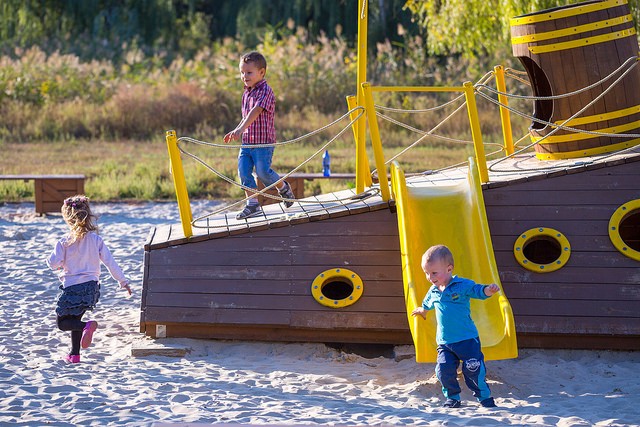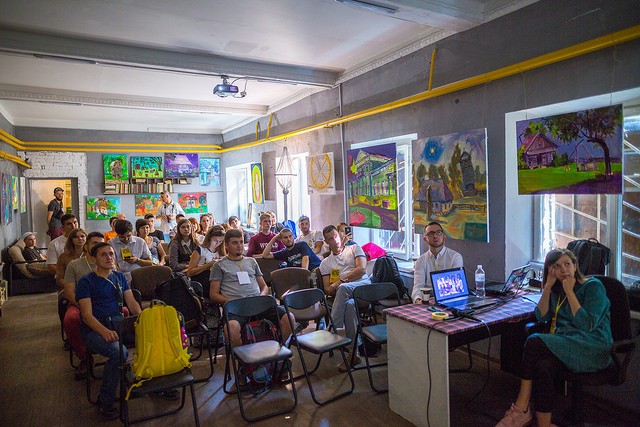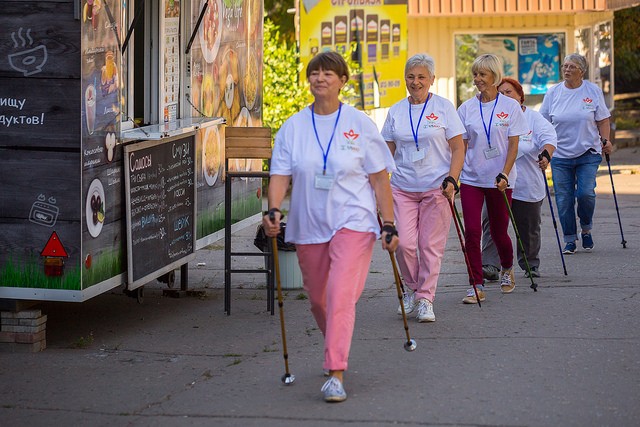Speeches Shim
October 2018 - The train ride from Kyiv, Ukraine’s bustling capital, to Kramatorsk, the new capital of the Ukrainian government-controlled side of Donetsk Oblast, is a modern, quiet, six-hour journey. With free wifi and televisions showing cute cat videos and animated shorts, today’s Ukrainian train is a reminder of the changes the country’s seen in recent years. These modern trains first hit the rails in 2012, moving travelers to cities in comfort across the country.
The public service announcements (PSAs) playing on the televisions found in each train car, however, serve as poignant reminders of how much the country has changed in the past four years. “No passport? No diploma? You still have a right to education,” a PSA from the Ministry of Education and Science flashes on the screen, targeting anyone on board who has been affected by the conflict that’s been raging in parts of Donetsk and Luhansk Oblasts since 2014.
The USAID Office of Transition Initiative’s Social Cohesion and Reconciliation Index (SCORE), a research tool developed to assess conflict environments, found for 2018 that a quarter of the population, or up to 10 million Ukrainians, either participated or are close to someone who participated in the conflict. As of April 2018, the Government of Ukraine estimates that the conflict has forced 1.5 million people to flee their homes. Many of these internally displaced persons (IDPs) have relocated to other parts of Ukraine, including nearby cities like Kramatorsk.
When I visited Kramatorsk this September, I encountered a city undergoing transformation. The city square was abuzz with construction, giving it a refreshing facelift. Playgrounds are receiving fresh coats of paint by children and parents celebrating community together. Newly repaved roads traverse the city and link it to neighboring towns like Slovyansk, where USAID and the local government supported the reconstruction of the the town’s central park.

While the visible changes in the government-controlled areas of Donetsk Oblast are notable, the transformation taking place within the communities is what struck me most during my trip. With USAID support, youth hubs, where young people gather to exchange ideas and learn about such topics as civic engagement, and collaborative work spaces where adults can take business development classes, are taking hold and spreading in various communities.

Many of these changes are occurring beyond the walls of hubs and centers. The Age of Happiness, a senior club overseen by an inspiring leader named Natalya, provides meaningful life enrichment activities for senior citizens in Slovyansk. Through such activities as yoga, hiking, and travel - including to western Ukraine - senior citizens are building a greater sense of community for their generation. “It’s more than just the activities,” Natalya tells me. “Now we have a future.”

USAID also supports decentralization, the process for transferring authority and funding from the national government to local self-government bodies. This process is empowering communities to shape their environments, as well as their futures. Through locally driven strategic planning and budget management, communities are determining where and when to invest their resources, while giving citizens the sense that their local needs are being addressed.
“When Ukrainians from the non government-controlled areas of Donetsk visit, they see the positive changes taking place here and carry those messages back when they return to the other side,” one of our local partners told me. While the conflict in eastern Ukraine remains, these messages of transformation serve as a powerful tool of hope that a peaceful, stable, and united Ukraine is within reach.
Alison Case, USAID/Ukraine Desk Officer

Comment
Make a general inquiry or suggest an improvement.